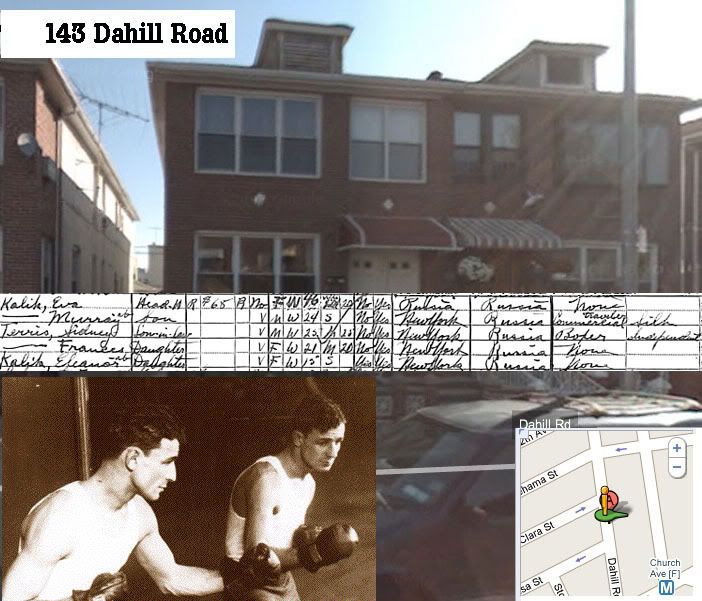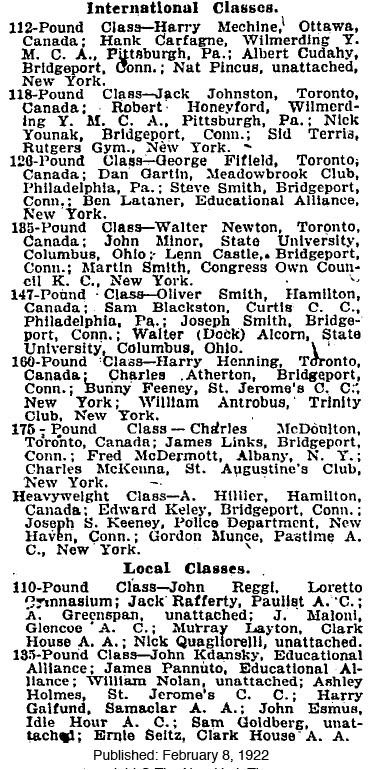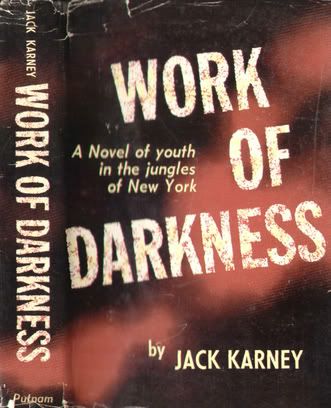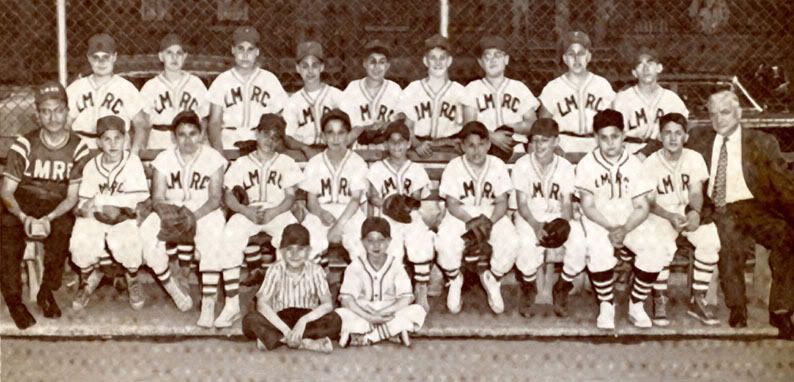Searching for nyc bakery images landed me fortuitously on
artist Charles Miller's site with great illustrations of Jewish boxers. I used thumbs of those images with part of the soundtrack of Cinderella Man As previously mentioned there
were many Knickerbocker fathers who boxed in the 20's and 30's. Some might have rubbed elbows (and chins) with some of those displayed here.
The great Benny Leonard lived on 9th Street and
Miller's site has a bio of another LES fighter named Sid Terris. An excerpt:
Sid Terris, "The Galloping Ghost, "Lightweight Contender
By Evan Lerner
Boxing writers of the era, having rarely seen a fighter faster on his feet or with quicker hand speed, fondly referred to him as "The Dancing Master of the East Side". The Bible of Boxing, Ring Magazine called him, "the speediest fighter of his generation". And when Damon Runyon called Sid Terris, "The Galloping Ghost of the Ghetto", the name stuck.
Sidney Terris was born one of five children of Fred and Gussie Terris on September 27th 1904 on Clinton Street in the Lower East Side of Manhattan. In the 1910πs and 20s the Lower East Side was veritable breeding ground for prizefighters. Hundreds of fighters, some of the best of a generation came from this impoverished neighborhood of Jewish immigrants.
Fred Terris passed away suddenly when Sid was eight years old, leaving Gussie to care for the entire family herself. Encouraged by her to focus on his studies and desperate to help support the struggling family, Sid decided he would grow up to become a lawyer. But he was a natural athlete; fast, agile and rangy and instead of focusing on his studies, everyday after school he and his friends would make their way to one of the local gyms to shoot some hoops.
One afternoon at Rutger's gym, the neighborhood boxing instructor, Dan Caplin noticed thirteen year-old Sid's footwork. Caplin, a bespectacled schoolteacher by trade, signaled over to his brother and fellow trainer, Hymie. Dan and Hymie Caplin were streetwise, low level trainer/managers in the New York City fight game, where if you had a hot prospect, there was profit. Dan was sure he had found unmined gold in young Sid Terris, and Hymie, blond and pink-cheeked took one look at the kid's footwork and agreed. That day Dan Caplin convinced Sid to take boxing lessons at the gym.
Much like his Hebrew Schoolmate, Ruby Goldstein, Sid was an instinctive, scientific boxer and he had an unparalleled speed and agility. He took to the "sweet science" as quickly and easily as his feet moved him around the ring. He was short on punching power, but he moved like Mercury; Hymie Caplin figured his lightning feet would propel him to the lightweight championship if he couldn't get there with his fists alone.
To test train their new protege, the Caplin's began entering Sid in amateur tournaments. He coasted through the ranks winning the Metropolitan, New York State, National, and International amateur titles. The Caplin brothers turned Sid pro in 1922 and by then he had chalked up 50 consecutive amateur wins. After 20 fights in his first year as a pro, Sid lost only twice. The fleet-footed kid, now a handsome, tall 19-year-old, was suddenly a prominent lightweight contender.
1924 was a star-making year. He delivered eighteen straight wins, the most notable in August when he fought Benny Valgar. In his fights around New York City, the Ghetto Ghost was drawing huge crowds.
In October of that year, the bible of boxing, Ring Magazine wrote, "There is no stopping Terris in his quest of the 135-pound laurels. Many are of the opinion that in six or eight more months he will defeat [Benny] Leonard".
That was quite a statement to make. Benny Leonard had been the undefeated lightweight king since 1917. His fists and feet were the picture of speed, but what made him most dangerous was his punch: it was nothing if not persuasive. Leonard with his smooth, slicked back dark hair was fond of declaring that it was a rare event it ever got mussed in a fight. To this day he is considered one of the top five lightweights of all time. For Sid to unseat the man they called The Ghetto Wizard, he would need to out class the master.
Since the article mentions that Terris lived on Clinton and fought at the Rutger's gym
more than likely Terris lived on the southern part of Clinton which would be Ward 7. Rutgers only extended from South Street to East Broadway. It would be interesting to figure out the exact address of the gym.




























